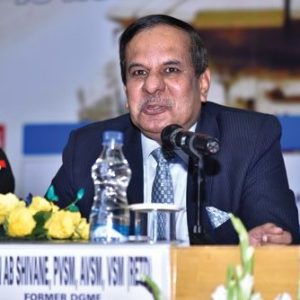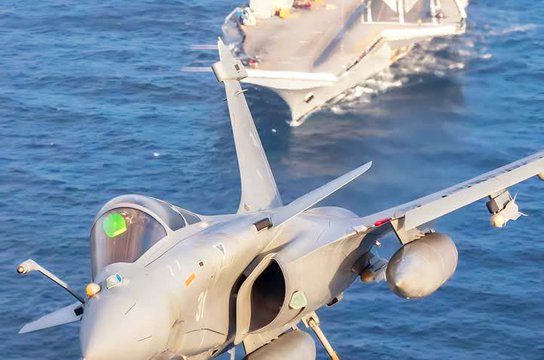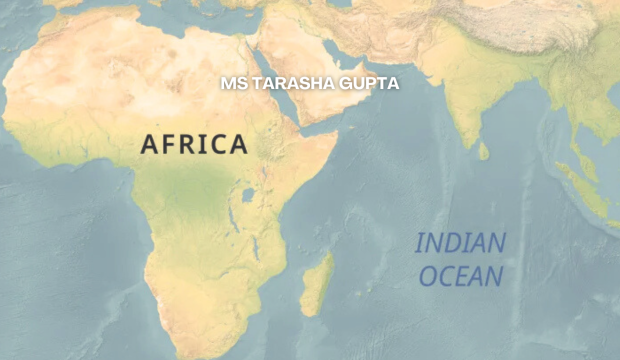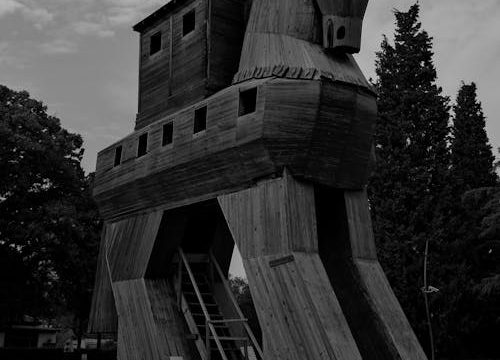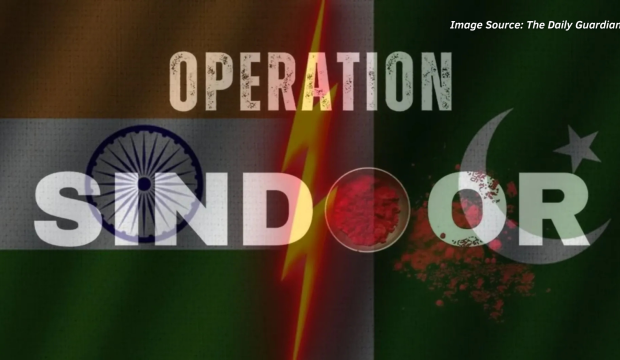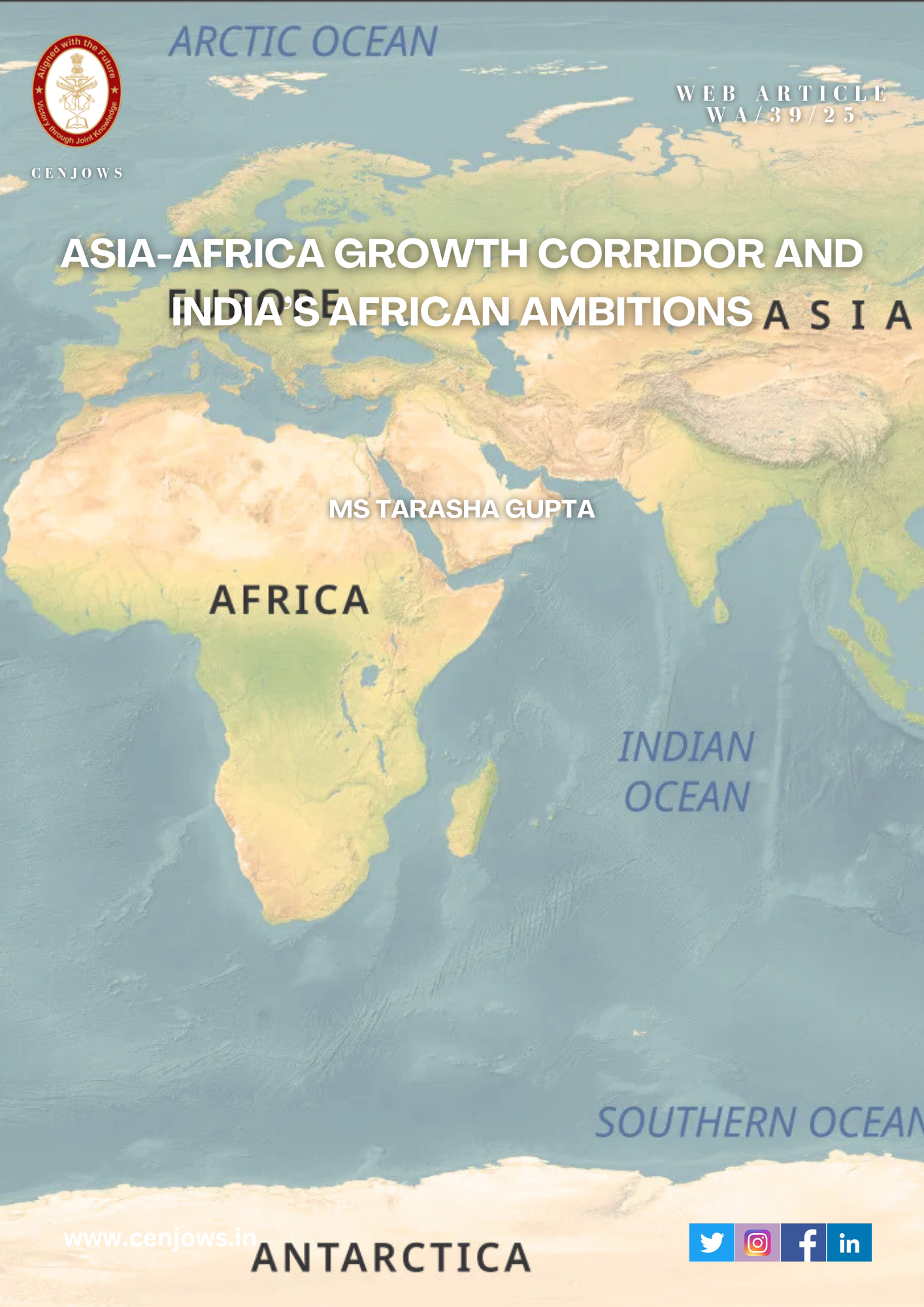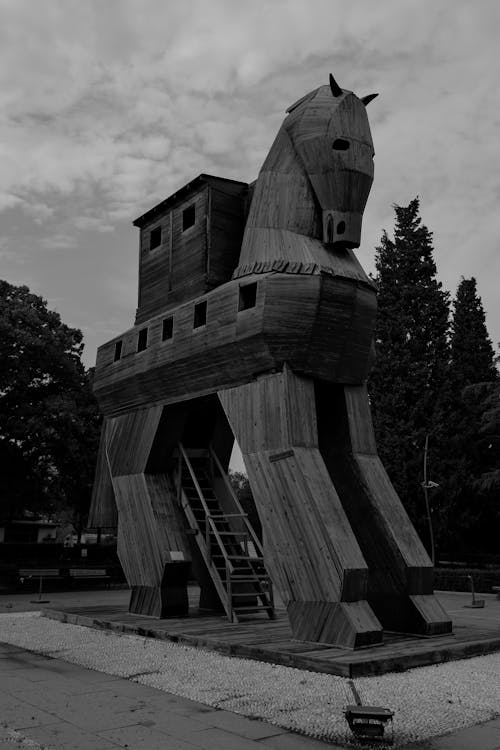Introduction
Military leadership in the 21st century presents a multitude of intricate and multifarious challenges that necessitate character, flexibility, creativity, intellectual superiority, and an unwavering commitment to excellence. The ever-evolving global and regional landscape, in conjunction with shifting societal norms and technological advancements, compels military commanders to chart unexplored territory while upholding the values of professionalism, ethics, and national security.
Higher military leadership assumes a pivotal role in guiding the course and efficacy of modern armed forces. Although fundamental leadership tenets retain their importance, the intricacies of today’s security milieu mandate that these leaders possess a wide-ranging skill set and a profound comprehension of multifaceted challenges
Global and Regional Environment
The Shifting Sands of Global Alliances: The once-stable alliances and partnerships are undergoing seismic shifts, driven by evolving national interests, emerging power centres, and the resurgence of hypernationalism. This necessitates a constant reassessment of strategic partnerships and the development of flexible strategies to safeguard national interests.
Navigating Complex International Relations: In this era of interconnectedness, balancing complex international relations while ensuring strategic autonomy is in the interest of national security. Self-reliance and generating indigenous capabilities with a resilient military-industrial base will be the key. They must safeguard their nation’s interests while avoiding entanglements in divisive conflicts. The ability to read and interpret the geopolitical landscape accurately is crucial to making informed decisions.
Domestic Environment
The Thin Line Between Military and Civilian Roles: Military leadership faces the unique challenge of being drawn into the realm of domestic security and stability. Communal tensions, economic discontent, and population pressures can spill over into the military’s domain, blurring the line between its traditional role and civilian governance. This evolving dynamic necessitates careful management to prevent undue military interference in civil affairs.
Psychological Challenges for Soldiers: Soldiers operating in this blurred environment may face psychological challenges. They must juggle their duties as military professionals with their roles as citizens. The mental toll of managing domestic security while upholding ethical standards can be taxing, making psychological resilience and support critical components of modern military leadership.
Influence of Society
Changing Societal Values: Society’s values are in a constant state of flux, driven by education, communication, and evolving cultural norms. Military leaders can no longer rely solely on traditional motivations like class or racial pride to inspire their troops. Adaptability in leadership styles is necessary to connect with a more diverse and informed group of soldiers who question outdated norms and practices.
Leadership in a Diverse World: Embracing diversity is not only a societal value but also an imperative for military leadership. Leaders must learn to harness the strength of a diverse force, ensuring that all soldiers feel valued and heard. Inclusivity is not just a moral principle but also a strategic advantage in a world characterized by diversity.
Economic Influence
Changing Economic Landscape: Traditionally, the military has offered economic opportunities, attracting talent and character to its ranks. However, the changing economic landscape, with the emergence of new industries and job markets, poses a challenge. The military must adapt to compete with other career options and retain its ability to attract top talent.
Impact on Military Leadership Quality: As economic opportunities diversify; military leadership may face talent diversion to other fields. This can have a direct impact on the quality and character of future military leaders. The military must invest in competitive compensation packages, professional development opportunities, and a supportive work environment to retain top-tier talent.
Environmental Changes Affecting Soldiers
Societal and Political Changes: Soldiers’ personal lives, social standing, and political awareness are significantly influenced by broader societal and political changes. These external factors can have repercussions on their psychological well-being and morale, directly affecting their readiness and effectiveness as military professionals.
The Peace Time Environment: The peacetime military faces its own set of challenges, which can impact preparedness for conflict. These challenges include overambitious leadership, frequent disruptions in training and operations, growing awareness of rights and privileges among soldiers, lack of necessities, and unrealistic training scenarios that do not adequately prepare troops for the complexities of modern warfare.
Future Battlespace
The rapid transformation in society, culture and global power play requires understanding the larger dimension of war. The conduct of warfare has witnessed a paradigm shift in the goals of war, the rules of war, the players, and the tools of war, reshaping its character and domains. It’s an era of multidomain warfare which requires cross-domain competence both in kinetic and non-kinetic domains. Culture, history, geography, technology, society, geostrategic dynamics, doctrine, economics, trade, and nationalism all combine to shape the modern battlespace. Digit, digitisation, digitalisation, and disruption are revolutionising the technological battlespace. The social media battle space and information warfare have also created challenges of shaping not only the enemy but also the domestic and international audience perceptions of a favourable narrative. Thus, national security calculus and understanding of war demands a relook through a more holistic prism by the nation and its military. Prevailing in the future battlespace will require not only sound military training but also a deep and wider understanding of war by future military leaders
Military leaders must not only adapt to these changes but also exploit emerging technologies to gain a strategic advantage. This requires a shift towards directive command styles, transparency, and a relentless focus on leveraging technology for military effectiveness.
Future military leaders must be empowered in three critical areas – knowledge, technical and tactical skills and the wisdom and judgment to be applied in diverse time-sensitive complex situations under disruptive conditions and uncertainty. Legacy organisations, practices and doctrines are increasingly at odds with emerging realities. Professional Military Education (PME) must be rooted in the ‘intellectual, moral, and social instruction of a professional community suggesting that education should be bound within policy and doctrinal assumptions. Thus, the challenge for PME is to reshape its structures, reorient its focus and rebalance its contents to make it relevant and responsive to empowering military leaders to prevail in future multi-domain battlespace.
Demands on Junior and Middle-Level Leadership
Well-Rounded Leaders: The demands on junior and middle-level leaders have never been greater. They must be well-rounded, with a clear understanding of war perspectives, the ability to leverage technology effectively, and the capacity to handle stress, ambiguity, and social infirmities within the military. Developing these leaders is essential for the overall effectiveness of the armed forces.
Building Resilience: Leaders must also focus on building resilience among junior and middle-level officers. This includes equipping them with the tools to handle stress, make sound decisions under pressure, and adapt to the changing dynamics of modern military operations.
Essential Ingredients for a Successful Junior/Middle-Level Leader
(a) A strong character without yielding to the pressures of an adverse environment. A character built on courage, loyalty, and integrity.
(b) Professional astuteness, a keen intellect, and a keen penetrative mind. Understanding three up, while being grounded to realities two down.
(c) Foresight and envision eventualities that are likely to occur, which will enable him to be prepared for these and train the environment well in time.
(d) Wisdom and decisiveness for making balanced, timely and rational judgments under volatility, uncertainty, complexity, and ambiguity.
(e) Possess both an intelligent and intellectual frame of mind open to ideas with a balanced emotional and spiritual quotient.
(f) Professional dignity, ie, maintaining the highest standards, traditions, uprightness, and firmness in dealing with matters professional. Professional arrogance based on self-confidence and humility are virtues.
(g) Self-knowledge, ie he must understand himself, and be aware of his strong points and shortcomings. Introspection and a quest for constant improvement are qualities of leadership.
(h) Superior mental and physical stamina to challenge and overcome adversity like in Kargil is a quality of both the mind and body of leaders.
(j) Selflessness and keeping organisation and team interest above all is essential. The will to sacrifice personal requirements over organisational interests remains a challenge.
(k) The junior and middle-level leaders should be role models to inspire their subordinates and colleagues.
(l) Above all aggressive spirit and a victorious will with calmness of mind is a virtue that paves the path of success and fosters team spirit.
(m) A quest for lifelong learning for self-development and self-reflection to progress from a zone of “unconscious incompetence to conscious incompetence to conscious competence to unconscious competence”. There is presently an emphasis on careerism rather than learning and self-development. PME requires time to read, the ability to absorb, time to openly discuss and time to appreciate counter views. Thus, focusing on learning and reflecting results in superior intellectual vigour than the present race to secure course grades or Google expertise for quick fixes by cut-copy-paste. The era of AI and Chat GPT has further posed challenges to igniting the originality of grey cells.
Challenges Confronting Higher Military Leadership
The world over the higher military leadership faces similar challenges as indicated below. While it is not specific to a nation yet finds its traces and webs in most militaries across the globe. The biggest threat lies in the conformist and silo-based culture that remains deeply embedded in the legacy of yesteryears in the military. With bureaucratic control over defence policy, the focus remains on efficiency and cost-cutting, not effectiveness and enablement.
Deteriorating Morals, Ethics, and Values: The influence of societal changes and the adoption of pseudo-cultures can lead to erosion in the moral standards, ethics, and ethical conduct among some hierarchical leadership when power and authority blend under one head. The need is for ‘Men of Steel’ and not ‘Men of Straw’, with a straight backbone, broad shoulders, and a large heart with an organisation focus. Authority, accountability, and responsibility are the key essence of military leadership.
Lack of Vision and Wisdom: Higher military leadership must be visionary and transformational. There have been instances of short-sightedness and reactive decision-making among the higher military leadership. Developing strategic thinking and envisioning the future should be a priority in leadership development programs for senior officers. The commitment to internal security tasks like counter terrorism which is not the primary task of the Defence Forces takes its toll on strategic thinking as the focus remains tactical. Thus, often operational-level competence and strategic insight are voids in higher military leadership. Tactical victories do not necessarily result in operational and strategic victories or better outcomes.
Selfishness and Career Advancement: There is a perception that at times higher-ranking officers prioritize their career advancement over the dignity of uniform and professionalism. This has led to a culture of favouritism and manipulation, where merit is overlooked. Promoting a culture of meritocracy and accountability is crucial to address this challenge.
Zero Error Syndrome and Mediocrity: The pursuit of a “Zero Error Syndrome” has led to a fear of failure and risk aversion among senior leaders. This culture of risk avoidance can result in mediocrity and a lack of innovation in decision-making. Encouraging calculated risk-taking and learning from failures should be part of leadership development for senior officers. Further, the learning through courses of equipment fault finding served its purpose well, yet at times it created a culture of focus on fault finding and cynicism as a style statement to showcase professional arrogance. This is detrimental to the desired organisation culture.
Bloated Ego and Arrogance: Organisational politics, parochialism, and power struggles, driven by ego clashes, can hinder effective leadership and decision-making. Sensitivity to ego and conflicts within the military hierarchy can be detrimental to the organization. Leadership development programs should focus on emotional intelligence and interpersonal conflict resolution to mitigate ego-driven issues.
Ineffective Politico-Military Interface: The relationship between the military and politicians, often mediated by bureaucrats, can lead to issues where military leaders cannot assert their professional opinions or say no to political pressures when necessary. Further, the contradictions and bureaucratic upheaval within the military at times lead to axing your own feet. This can impact national security and the military’s image.
Political Patronage: Political patronage in the military poses a grave threat to the principles of meritocracy, professionalism, and national security. Fear of a changed lifestyle after retirement at times drives some senior officers to seek political patronage, potentially compromising their ethical conduct. The dignity of rank and respect of the uniform must never be compromised. Higher military leadership faces significant challenges in resisting political patronisation, as the militarisation of the polity and the politicisation of the military can have detrimental effects on national security.
Lack of Balanced Temperament: Some higher-ranking officers are described as having a zero-tolerance attitude, short temper, cynicism, and rigidity. Often, they speak more and prefer to hear what music to their ears. A leader must not only be heard but must give a patient hearing to understand alternative thoughts and encourage constructive criticism for the organisation’s well-being. This approach can hinder effective communication and leadership and may be perceived as a weakness by subordinates. A leader is respected not for his power but for his ability to empower his team.
Desired Attributes for Higher Military Leadership
The distinction between a good and a great leader will magnify in effect in the future battlespace of multi-domain warfare with the overlapping needs of a scholar and a warrior. Thus, to cultivate future military leaders, leadership attributes need to balance skills, knowledge, and experience.
The vision must be to develop future joint warfighters adept in the art and science of warfare, who think strategically, are empowered intellectually, and can creatively apply both kinetic and non-kinetic military power to achieve combat overmatch, under disruptive conditions of uncertainty and accelerated rate of change in a multidomain joint warfare environment.
The military needs leaders with cognitive ability, conceptual skill, learning agility and a professional culture that promotes a contest of ideas and candour. Some of the desired leadership attributes are as follows:
(a) Ability to comprehend the larger strategic picture of the security environment and military as an integrated instrument of national power. Possess a clear understanding of the operational level of warfare and its application. Possess clarity to the military dimension for the preservation of national security and its application within the overarching frameworks of multi-domain integrated joint operations. Imbibe combined arms and joint warfare as a professional culture through purple culture and cross-pollination.
(b) Comprehend and adapt to the paradigm shifts in warfare, to reorient leaders, structures, and doctrines for future warfighting, with an accent on indigenous character. Technology to be exploited must first be adapted by leaders and doctrinally embedded.
(c) Ability to work through the blurred line between risk and danger and retain composure in the face of surprise and ambiguity.
(d) Develop an offensive spirit and a proactive mindset working from the hope of success rather than fear of failure. Defensive mindsets and reactive dispositions continue to mar the contrary requirement of denial, proactive and preemptive approaches.
(e) Possess the 5C’s—Competence (multi-domain with technology interface), Character (based on values and service ethics), Critical thinking (leading to creativity and thought leadership), Cultural agility (for transformation and change management), and Communication skill (extending from tactical to strategic level).
(f) Agility to manage change before change manages them and brings in the doctrinal transformation of cultures, structures, and force application by leading the transition.
(g) Leaders must be seen and heard and have the power to communicate with capability and credibility in an environment wherein the notion of victory is all about narratives and perceptions.
(h) Comprehend, adapt, and exploit the technology revolution and interface it to optimise the effects in the battlespace.
Recommendations for Meeting Future Challenges
General. The higher leadership of the future would be required to have a clear view of the strengths and weaknesses of our societal system. Senior leaders will also have to keep in mind that, war cannot be reduced to rules; friction distinguishes real war from paper war, combat is a soul of war, and the destruction of enemy forces must remain instrumental to political aims. The technology boundary one draws must encompass cost-effectiveness and future affordability. Political and operational wills with grassroots-level capability enhancement will have to be dovetailed while structuring/restructuring forces. Effective leadership would mean professionals with exemplary character. It is with these parameters that leadership will have to be provided for the future battlefield.
Politician- Bureaucrat- Military Harmony. India has suffered in the past for paying scant attention to National Defence and its Armed Forces. Formulations of our policies on defence-related issues have received a bureaucratic and diluted professional look. These policies have been reactive to economic, diplomatic, and financial compulsions rather than comprehensive geo-strategic evaluations and long-term strategic interests. Higher military leadership on the Indian scene demands greater attention to national security policies. The politician-bureaucrat-military equation has a very distinct characteristic i.e. Military system is in a subservient position. Politicians leave security management and functioning to the bureaucrat-military combine. By popular perception and status, the generalist civil servant symbolises civil control over the military. It is in this atmosphere of friction that the leaders would be required to state their vision for goals/objectives, restructuring the future and managing the social changes. Disjointed directions of war would have to be managed successfully. The absence of a national security strategy is a reality to be managed. Military leaders should learn to function in a peculiar atmosphere in which their professional capability and advice are comprehensively recognised, respected, and not delayed in implementation. Political patronage or politically driven military decisions which do not empower the national security calculus must be ruthlessly opposed most professionally. This requires a greater politico-military interface and harmony.
Exposure to Strategic Environment. The dynamics of global, regional, and domestic environments are very complex issues, requiring in-depth analysis of their ramifications on national security. Our higher leadership must be periodically exposed to such strategic environment capsules/symposiums incl technology and macroeconomics by experts, in a joint service cum political-military–bureaucrat atmosphere. The higher military leadership of the future must train and concentrate on the following key areas: –
- Monitoring the environment on a global, regional, and internal basis.
- Managing conflict and crises with optimum politico–military harmony.
- Strategic vision, wisdom, and goal setting.
- Establish an information system, designing interdependence and disseminating.
- Jointness is the foundation of all strategies.
Character and Competence Development. Character is the disposition of the leader, made up of morals, values, ethics and skills. Character development can progress appropriately or poorly and can take many upward and downward swings throughout a lifetime. The image of higher military leadership character is presently on a downward swing. Unless the higher leaders have high morals and ethics they will not be trusted by the subordinates. The motive and intention must be right, for even a small compromise will prove costly. There is a need to lay down a code of conduct for all levels of leadership, which if violated must invite deterrent punishment. If leaders of character who have the correct disposition perform leadership with the correct behaviour, then the Army will achieve excellence.
“A man of character in peace is a man of courage in war. Character is a habit, the daily choice of right and wrong. It is a moral quality which grows to maturity in peace and is not suddenly developed in war”.
General Sir James Glover
Character building and the importance of character qualities must be given its rightful place in the system, both in the confidential reports and while evaluating officer’s potential for senior appointments. Character development must form an essential structured curriculum for training at all levels. The honour code of the Indian Military Academy is to be followed – ‘Service Before Self’’ must be practised. To ensure this there is a need to teach and inculcate high moral standards at the National Defence Academy and the Indian Military Academy. The performance of officers then should be monitored to ensure high standards. It is the responsibility of the commanders to strictly ensure that officers who do not come up to the desired level should not be allowed to progress in their career, or else at a later stage they will let this great and respected organisation down.
Selection for Higher Leadership It is a uniform experience in all countries that while enduring long spells of peace, it is invariably the self-seeking, hard-working and pliable officers who forge ahead. Also, those who master the techniques of public relations to promote their image, forge ahead. Consequently, it is one of the most difficult tasks of selectors to ensure that such climbers are not entrusted with the responsibilities of the higher command, because under the stress of battle, they are likely to collapse. Spotting potential higher military commanders and then grooming them is the most important job of the formation commanders. Senior military commanders must maintain the tradition of knowing their men better than their mothers do. A senior officer needs to rise above his likes and dislikes, regimental or other considerations and exercise ruthless objectivity when he sits in judgment over the future advancement of officers under him. The concept of Behavioral Scientists/ psychologist inputs for higher rank selection also needs consideration.
Leadership Doctrine. This doctrine should provide the basis for leaders in the twenty-first century to meet the challenges for value-based Defence Forces: accomplish the mission and look ahead. It must address leaders at all levels and integrate leadership terms, specific codes of conduct, values, attributes, and skills. The leadership doctrine must provide a philosophy to get a comprehensive view of life. A leadership doctrine that supports a particular type of warfighting approach for future battlefields and which is dependent on individual initiative and the “Auftragstaktik” directive style of command duly integrated with the operational doctrine is the need of the hour. Efforts to encourage prudent risk-taking on the part of subordinates require almost herculean energies if they are to prevail against the tide of hierarchical conservatism must be addressed. Transformational leadership, by the enlightened use of inspiration, communication and understanding of human behaviour by higher leadership should be an intrinsic part of the doctrine.
Visioning. Visioning and macro analysis must be progressively imbibed in the development training of leaders for the higher direction of war. The concept of visioning aims at coordinating actions to ensure a common shared joint vision across the armed forces, inculcation of values necessary to achieve that vision and prioritisation based on those values. It is the prime and collective responsibility of higher military leadership to establish purpose, vision, values, goals, and objectives. Thus, higher leadership should be trained and competent in laying down a vision with a clearly defined methodology and end state. Visioning can be taught at each level through exposure to higher planes and formal training during courses wherein students are taught not how to do a thing, but how to think. Clausewitz said, “War is the realm of uncertainty, three fourth of the factors on which action is based are wrapped in a fog of lesser or greater uncertainty.”
Keeping Pace with Emerging Technologies. An imperative for higher leadership is a clear comprehension of emerging technologies and their implication for future warfare. A nation’s technological vision is a critical forerunner in matters of national security. Our higher leadership must be “techno-savvy” and ensure we do not lag in this modernisation race, as has been the case with our recent armour night fighting capability. Winston Churchill very aptly put it, “To every man, there comes in his lifetime that special moment when he is figuratively tapped on the shoulder and offered that chance to do a very special thing, unique to him and his talents. What a tragedy if that moment finds him unprepared or unqualified for the work”.
Institutionalising Change. Introducing change in all organisations is fundamentally problematic since there are strong forces for stability. The institutionalisation of change is however essential for the military in preparing for the future battlefield. Creating an image of the system (paradigm) and reinforcing it is one of the most important roles of higher military leadership. This would compensate for some of the detailed and direct control which is given up with decentralisation. In essence, indirect control can be exercised to the extent that decisions at lower levels emerge from high commitment on the part of lower-level commanders and leaders to shared perspectives and values. Therefore, it is the bounded duty of top leadership to institutionalise the management of change and communicate the same to avoid turbulence in the organisation.
Imbibing Management Techniques. At higher ranks, an officer manages and leads more and more in an atmosphere of ambiguity. Thus in the future battlefield environment, imbibing management techniques and scientific methods to reduce ambiguity and enhance leadership development is an inescapable requirement. Therefore, the study of behavioural science and systems leadership concept described earlier, duly adapted to our environment and military system merits examination.
Leadership as a By-product of Spirituality. Character is the foundation of leadership. It is also amply clear that spirituality aims at the spiritual growth of a person through a moral/ethical route. There is thus a definite linkage between character building and spirituality. Thus, leadership is a by-product of the spiritual growth of a person. If one studies the scriptures and understands the culture and heritage of India, it would be quite revealing that spirituality can enhance leadership. For example, Karma is the fruits, the good or evil effects, of action. The action of itself is a manifestation of energy. So, every action, be it physical, mental, or spiritual is energy in motion. Energy by itself is devoid of emotion and so is not bound by the conditioning of good and evil. Energy is energy, vibrating at a subtle or gross frequency. Appropriately, the effects of each of our actions are either good or evil, only in the sense that we may define good or evil. Good actions may be simply defined as those that serve to bring about harmony in the internal and external states of the body, mind, and soul, and evil actions as those that strengthen the fetters of ‘maya’ and imprison us further in the cocoon of ignorance. They are relevant and focus on direction, so essential in assisting us in achieving peace of mind and fulfilment. Therefore, emphasis must be laid on inculcating Indian value systems, including spiritual values, meditation, and Yoga in our curriculum as a step towards self-development for effective leadership at all levels.
Self-Development and Self-Realisation. Self-development is the key to improving our leadership potential. Sai Baba said: “Master yourself and you can master anything”. The higher leaders need to introspect to ascertain where they may be going wrong and correct themselves. The final arbitrator is the inner voice; every individual knows whether he/she is doing the right or the wrong thing. The need is to have strong character to be able to put aside the easy wrong and adopt the right path. To succeed in breaking away from deeply embedded negative habits involves clarity in our minds on ‘what, why and how we want to transform. If we want to be masters of our destiny by transformation, we must invest substantially in the main instrument that will give us this mastery – ourselves. The essential inputs for this transformation are time, patience, and willpower to persist. Its effectiveness depends on the strength and balance of the universal inner structure of the leader.
Conclusion
Military leadership in the 21st century poses a multifaceted challenge that demands a nuanced grasp of the dynamic global, societal, and technological landscape. Leaders must adeptly tailor their strategies and leadership approaches to navigate this intricate terrain while unwaveringly upholding the foundational principles of professionalism, ethics, and national security. By boldly confronting these challenges and cultivating the growth of adaptable, well-rounded leaders, armed forces can continue to meet the evolving demands of our ever-changing world. Moreover, by addressing the obstacles and gaps in higher military leadership and implementing forward-looking policies, we can ensure that our military leaders are superbly prepared to confront the intricate challenges of the modern era while upholding the highest standards of professionalism and ethics.
References
- Lt Gen A K Singh and Maj Gen Yash Mor (Editors), Men of Steel, KW Publishers, New Delhi, 2022.
Lt Gen A B Shivane, Professional Military Education: Making of the 21st Century Warrior, KW Publishers, New Delhi, Apr 2023.
Frank Hoffman in “The Changing Character of Warfare: The ‘Four Faces’ of the Future”, a brief presented to the Swedish Defence University, at https://www.usni.org/magazines/proceedings/2022/may/character-war-constantly-changing
- Thomas E. Ricks, “The Decay of the Profession of Arms”, Foreign Policy, January 2014, at https://foreignpolicy.com/2014/01/08/the-decay-of-the-profession- of-arms/
- Lt Gen AB Shivane, “Military Leadership Challenges in the Future Technology Embedded Battlespace”, June 2022, at https://raksha-anirveda.com/military- leadership-challenges-in-the-future-technology-embedded-battlespace/
- US Army, “Developing Today’s Joint Officers for Tomorrow’s Ways of War” May 2020, https://www.jcs.mil/Portals/36/Documents/Doctrine/education/jcs_ pme_tm_vision.pdf ?ver=2020-05-15-102429-817.
- Gautam Sen, “Professional Military Education in India: The emerging Scenario”, June 2013, https://www.academia.edu/7933614/Professional_Military_Education_in_India_The_emerging_Scenario
- Lt Gen A B Shivane, ‘Challenges of Higher Military Leadership’, Gold Medal Winning Dissertation on Higher Command Course, Army War College, Mhow, 2002-2003.
- Fog of War, Oxford Reference, https://www.oxfordreference.com/display/10.1093/oi/authority.20110803095826962#:~:text=Fog%20of%20war%20is%20often,’
- Teachings of Bhagawan Sri Sathya Sai Baba Volume 4, publications@ssswf.org, 2014, https://www.sathyasai.org/publications/TeachingsOfBSSSB-Vol04.html
